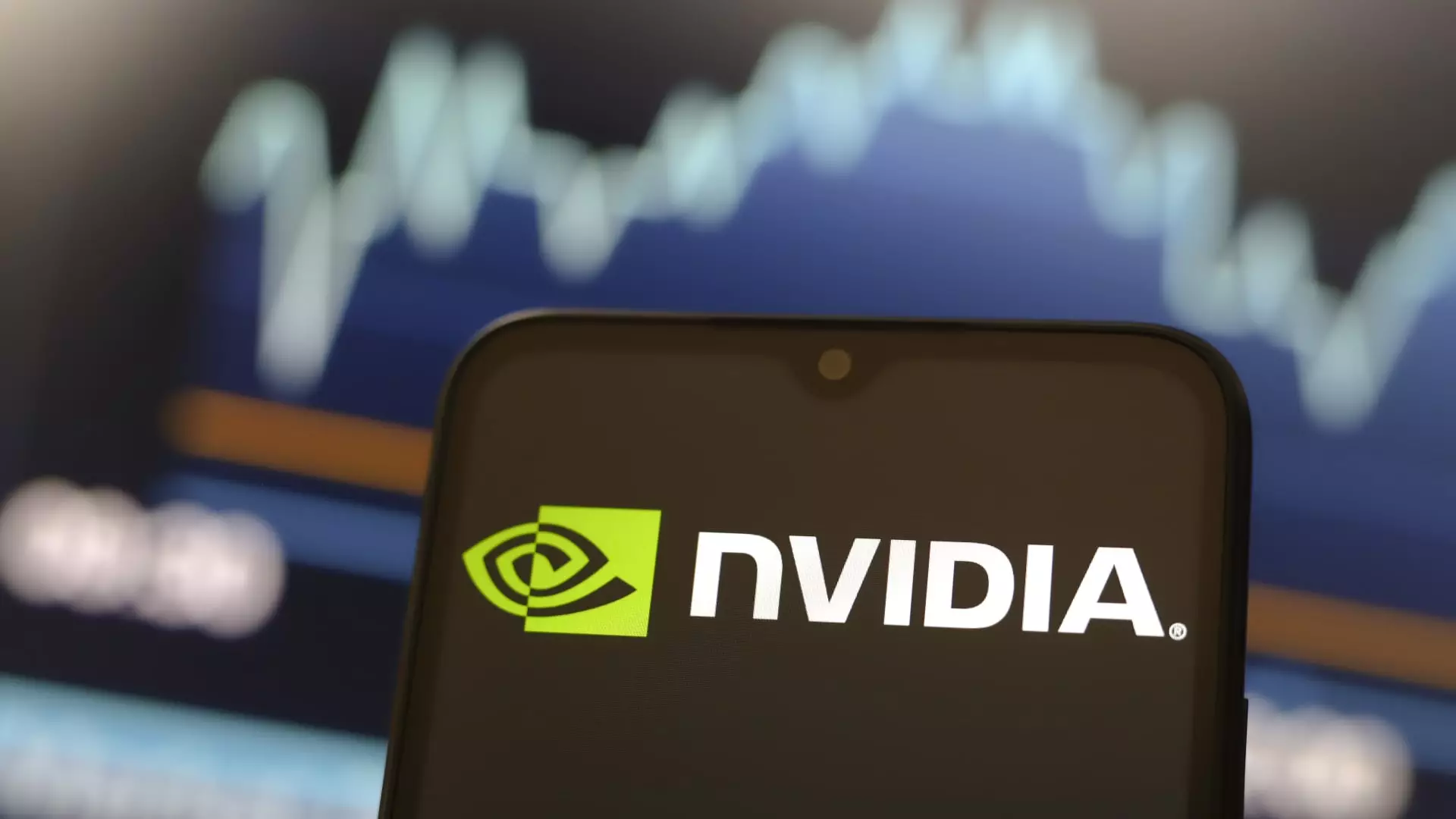Nvidia, the powerhouse in AI chip production, has recently found itself in a precarious position within the stock market, marking a significant downturn even as broader indices soar to new heights. This article delves into the implications of Nvidia’s latest performance, examines the potential reasons behind its slump, and analyzes the evolving dynamics among competing semiconductor stocks, particularly in the context of an accelerated technological landscape driven by artificial intelligence.
In a surprising turn of events, Nvidia’s shares dropped substantially, signifying a market correction as the stock fell over 10% from its recent peak of $148.88. Fuelled by fervor for artificial intelligence advancements, Nvidia saw its stock skyrocket up to 166% this year alone. However, December has not been kind, with a confirmed 4.5% decline. This juxtaposition of Nvidia’s struggle against the backdrop of the Nasdaq Composite reaching new record highs indicates a potential shifting narrative in investors’ priorities.
Market sentiment often reflects a broader understanding of a company’s current and future potential. According to financial experts, the phenomenon witnessed is partly attributed to investors recalibrating their expectations after an impressive year. Keith Lerner from Truist highlighted the essential nature of Nvidia’s chips for AI infrastructure, yet he suggests that investors are exploring other options within the semiconductor sector, indicating a rotation among the notable players in this field often referred to as the “Magnificent Seven.”
While Nvidia flounders, other semiconductor companies appear to be thriving. Broadcom, for instance, surged impressively by approximately 11%, buoyed by a stellar earnings report that catapulted its market capitalization past $1 trillion. This divergence raises questions: Is Nvidia losing its edge as momentum shifts to other chipmakers? There is a growing narrative suggesting that, as Nvidia’s stock falters, investors may be redistributing their capital into stocks showing stronger growth potential, as illustrated by recent performance of rivals like Micron Technology and Marvell Technology.
This rotation in the market could also signal an evolving investor strategy that prioritizes diversification within the semiconductor sector. As companies like Broadcom and Micron deliver positive news and performance, they attract momentum investors seeking quicker returns. Furthermore, it becomes evident that the market’s enthusiasm may not be solely fixed on AI but also on a wider array of technologies led by robust semiconductor growth, emphasizing the idea that the competition is becoming increasingly fierce.
Nvidia’s recent slump raises critical questions regarding its long-term sustainability as a market leader in AI chip production. As the broader market continues to perform well, and Nvidia struggles, analysts warn that this divergence could signify a concerning trend. Roth MKM has marked the $125 to $130 price point as a pivotal test for Nvidia’s stock, underscoring the importance of this critical threshold. If Nvidia fails to rebound, it might face further declines which could impact not only its valuation but the entire market sentiment towards the AI semiconductor landscape.
Additionally, with the rapid evolution of AI technologies and the ever-growing demand for computational power, reliance solely on Nvidia’s advancements may prove risky if competitors succeed in carving out significant market share. The ongoing developments in related technologies can allow other players to meet market demands quickly and effectively, potentially undermining Nvidia’s once-unassailable position.
As Nvidia grapples with its recent stock performance amidst a fluctuating market, it becomes increasingly vital for investors to monitor not only Nvidia’s fortunes but also the broader semiconductor ecosystem. The performance of other firms may indicate a strategic shift within the market, signaling changing investor priorities that could reshape the landscape of the semiconductor industry in profound ways.
Ultimately, while Nvidia’s dominance in AI technology remains significant, its recent struggles serve as a reminder of how quickly landscapes change within the fast-paced technology sector. As alternatives arise, the future trajectory of Nvidia and its competitors may become more complex, necessitating vigilant observation and strategic adjustment by investors navigating this ever-evolving marketplace.

